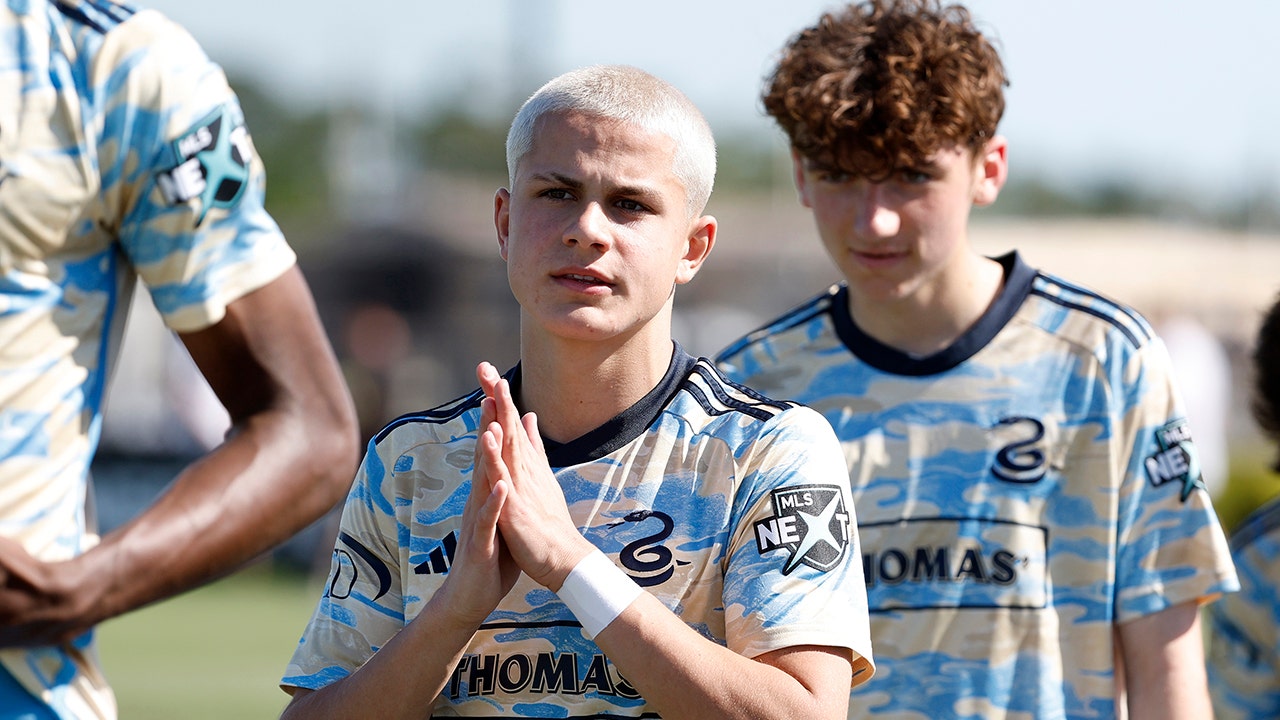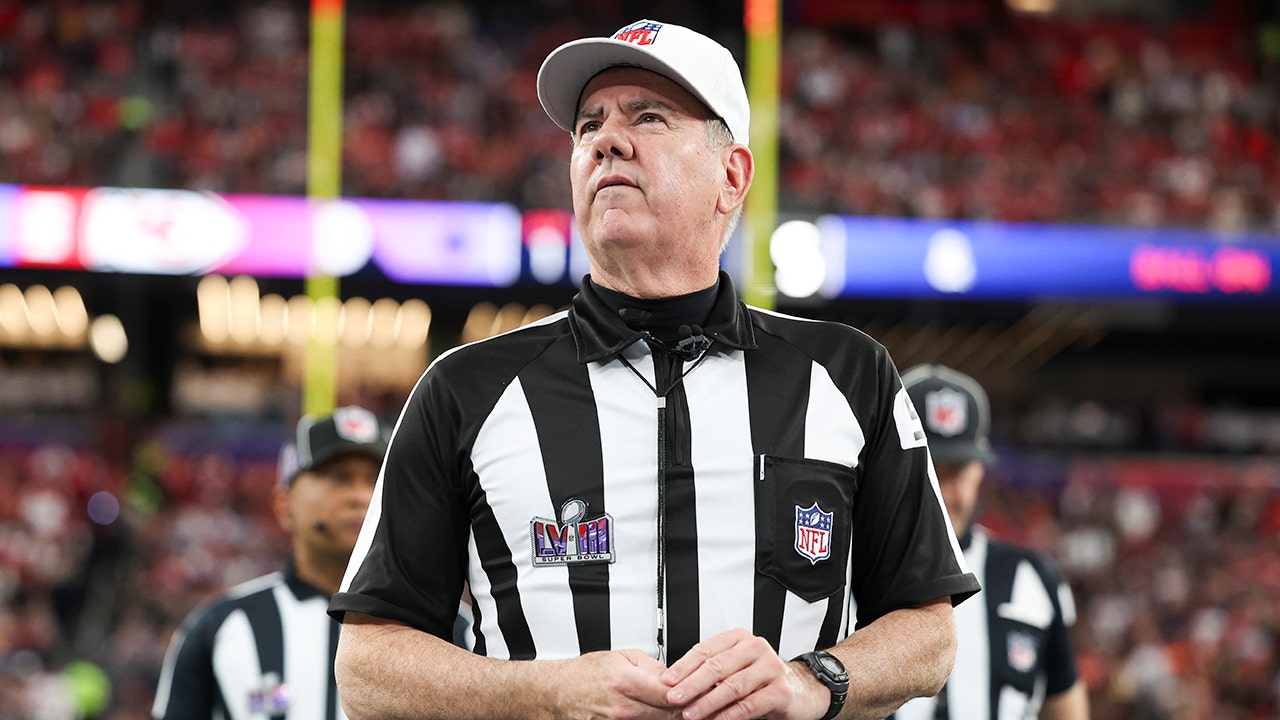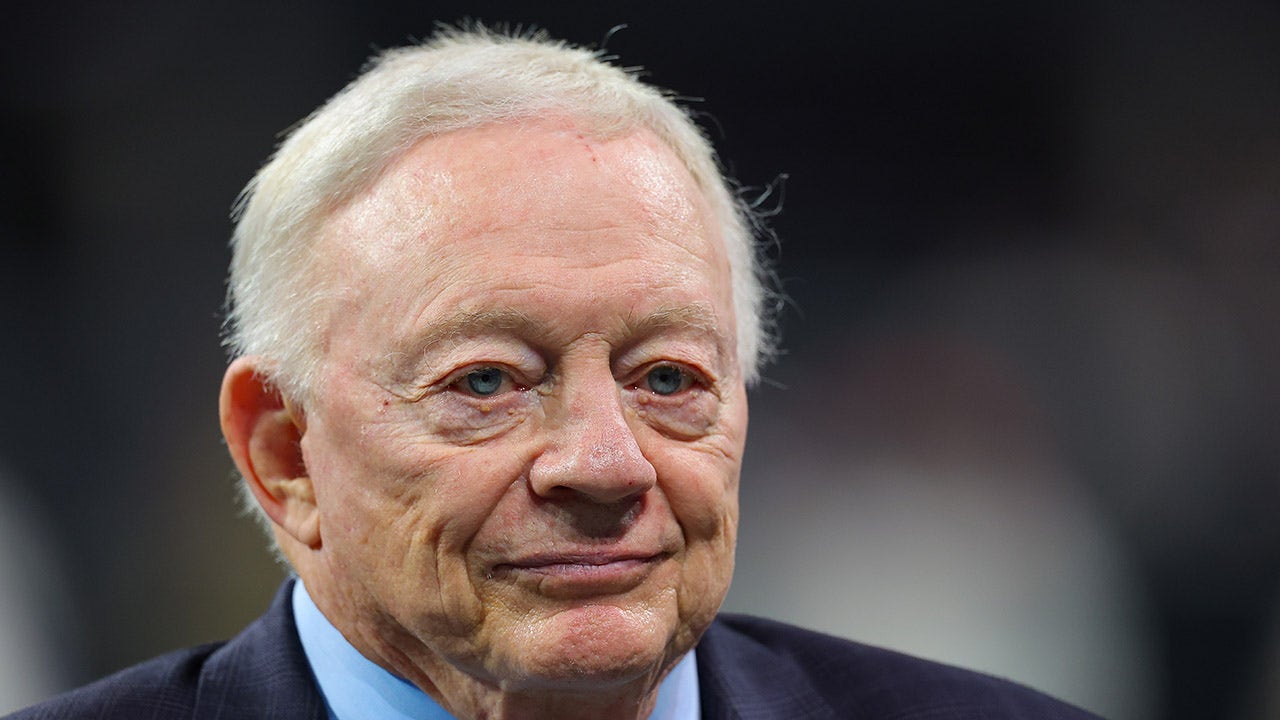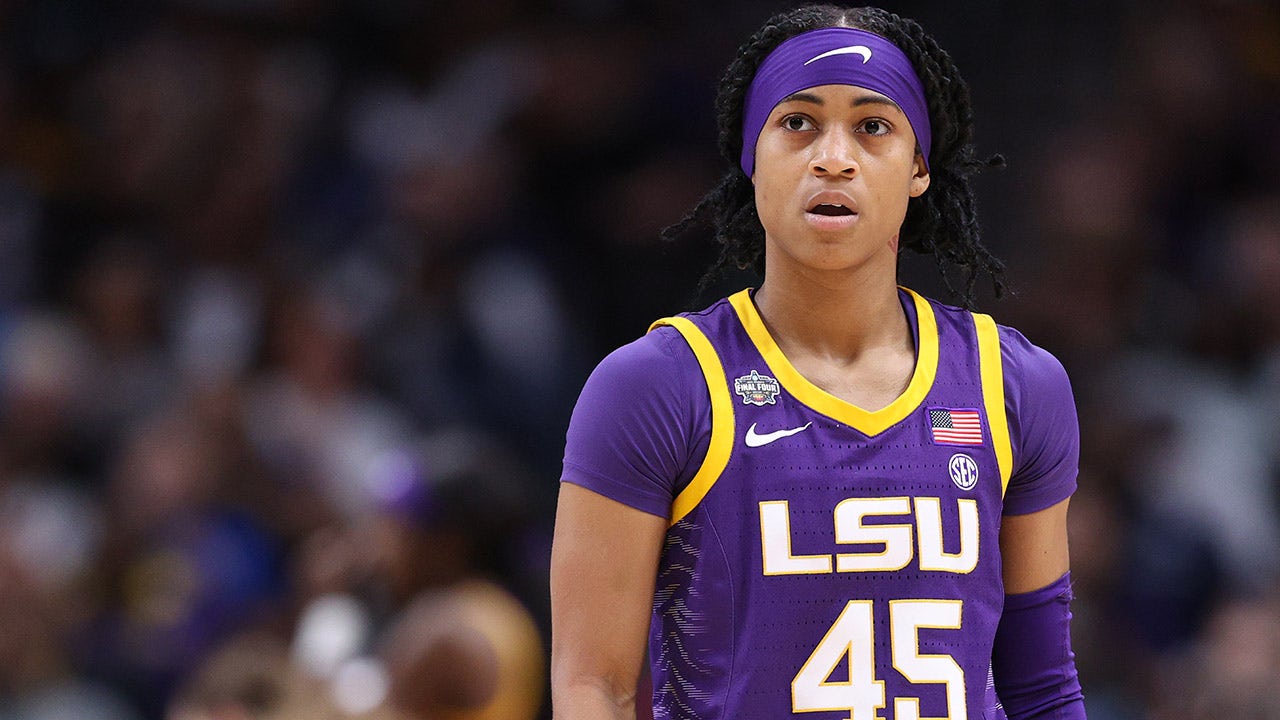The one man who cannot lose this World Series sat at home, watching the playoffs unfold when a friend forwarded an online post that gave him a shock.
“Because I’m with the Yankees now, I completely forgot,” said Taylor Trammell, a 27-year-old Yankees minor-league outfielder who appeared in five games this season for the big league team. “If the Dodgers win it, I can get a ring as well.”
That’s because before landing with the Yankees, Trammell played in five games earlier this season for the Dodgers. No matter what happens in the Fall Classic, he is guaranteed to be a champion, despite the fact that his seven at-bats between the two teams resulted in just one hit.
Trammell is an extreme example of a phenomenon that happens almost every season: players spend brief stints with World Series teams, and, regardless of the breadth of their contributions, are later given rings.
Not every great major-league player will earn a World Series ring. But most every player who appears on a team that wins the World Series receives a token of that accomplishment. It doesn’t matter if you are Yordan Alvarez, who hit 37 home runs for the 2022 champion Astros, or Taylor Jones, who took one at-bat. You could be David Ortiz, who drove in 139 runs for the iconic 2004 Red Sox — or you could be Phil Seibel, who pitched the only 3 2/3 innings of his big-league career that season for Boston.
The World Series between the Yankees and Dodgers will start on Friday, and with it will come rings for players long forgotten by fans. If New York wins, so too do Clayton Andrews and Clayton Beeter. If Los Angeles wins, Connor Brogdon and Zach Logue will get the same rings as Mookie Betts and Shohei Ohtani.
For nearly all of these fringe players, the emotions are complicated. They have technically achieved their goal, receiving one of the most coveted items in all of sports — a World Series ring — but they are faced with a quandary: Did they really earn it?
Not every ring is created equal, nor is every team’s process. Some teams give rings to every player who appeared on the 40-man roster. Some only to players who competed in a game. Some teams give better rings to better players. Ben Ford, who pitched 11 innings for the 2000 New York Yankees, said he never got a ring at all. Some faced more complicated decisions.
“When they came to me with, ‘Do you want a World Series ring,’ I was like, ‘No.’ … I mean, this is a team that DFA’d me,” said Austin Adams, who recorded three outs for the 2019 world champion Washington Nationals. “It was hard for me to accept that ring.”
Adams’ only work for the Nats came in mop-up duty in the seventh inning of a 9-3 loss in April. He allowed a run, was subsequently designated for assignment, then scoffed later when the organization called him for a ring fitting. He had no intention of collecting it because in his mind, it was “a participation trophy.”
Pitcher Jay Flaa can relate. In 2021, he recorded just four outs and allowed four runs for the world champion Atlanta Braves. “There is a large, large feeling of getting an ‘A’ on the group project,” he said, “and not showing up for any of the work.”
A coach on that championship Braves team, Sal Fasano, spent parts of 11 seasons as a catcher often bouncing between the majors and minors. In 2002, he appeared in only two major-league games, taking one at-bat. But that at-bat came for the Angels, who would go on to beat the Giants in the World Series. For those two games, Fasano received his only World Series ring as a player.
“You’re happy,” Fasano said, “because you’re part of one of the greatest teams of all time.”
That happiness, however, isn’t without nuance. As he watched that championship run from the dugout, he felt a certain guilt wash over him as Darin Erstad circled under the Series-clinching fly-out, and in the celebration that followed.
“You win a World Series and everybody’s excited,” Fasano said. “And you’re sitting there going, ‘What did I really do? I didn’t really do anything.’ You spend all your life wanting to win a World Series, then you know you didn’t contribute that much.”
Then there are those who actually hurt the teams that eventually gave them rings. Pitcher Jalen Beeks can’t help but laugh when he looks back at his 2018 Red Sox championship ring, because he seemingly did everything he could to stop that Boston squad from reaching the World Series.
The southpaw endured two disastrous appearances for the 2018 Red Sox, allowing nine earned runs over 6 1/3 innings, before he was traded to the Rays. With his new team, Beeks then pitched two great games against those same Red Sox, posting a 2.89 ERA over 9 1/3 frames.
“It’s hilarious,” Beeks said, noting he nevertheless wouldn’t trade the ring for anything. “I cost them like four games that year. I didn’t help them at all. I don’t know, man. It is an interesting twist on it.”
Beeks acknowledges he doesn’t feel much of a connection to that team, a sentiment shared by many in his position.
“I wish I could tell you my World Series ring left me with some sort of deep connection to the Astros, but unfortunately it’s just kind of a neat piece to show people that ask about it,” said Ashur Tolliver, who pitched five innings for the Houston Astros in 2017.
“I’m very glad I have the ring to show my kids and to be able to pass down from generation to generation. But personally, the ring itself doesn’t mean much to me.”
For many of these players, though, the rings mean everything. They don’t need to represent greatness, per se. Rather, many of these players look at them as a reflection of a baseball journey — a tangible representation of their life’s work.
Players on the edges of the major leagues do not live glamorous lives. They endure difficult minor-league travel, receive low wages, and lack the creature comforts -afforded to their major-league brethren. Most do it with no illusions of stardom. But the dream of making the majors, and then winning a championship, can make it all worth it — validation for reaching the highest level and contributing in some way.
“What a way to go out,” said Sean Kazmar Jr., who retired in the offseason after making a cameo with the 2021 Braves. “I still think about it today. I still think about the guys, all the work they put in. All the work I put in. It was all worth it, 100 percent. It’s hard to explain the feeling of going out a World Series champ, so to speak.”
Kazmar, who spent his entire childhood as a massive Braves fan, arrived in Atlanta’s camp in 2021 as a 36-year-old who hadn’t taken a big league at-bat in 13 years. Aside from a cup of coffee with the Padres in 2008, Kazmar was a minor-league lifer, having spent the last seven full seasons with Atlanta’s Triple-A team in Gwinnett.
But in April, Kazmar got his second chance. It lasted just three more games, featuring two at-bats and no hits. He watched the postseason at home with his family, and when Atlanta won the World Series, Kazmar felt no guilt or awkwardness. He felt instead the satisfaction of completing a long journey, a recognition of the difficulty it took to get there.
After the season, the Braves flew a representative out to him to hand-deliver his ring. His call-up was an inspiration, even if his contributions were not.

Sean Kazmar Jr. made the most of his 2021 big-league return. (Paul Beaty / Associated Press)
Dusty Coleman went hitless in five at-bats for the 2015 Kansas City Royals, and to him, the ring is similarly a symbol of what he accomplished simply by getting to the majors.
“I don’t anticipate a ton of people remembering me for my baseball career,” said Coleman, who also appeared in 27 games for the 2017 San Diego Padres. “At least I have the ring that I can pass down to my family, and they’ll know all the hard work and dedication I put into trying to get to where I was. And be proud of the career that I did have.”
Even some of those who initially have reservations about getting their ring eventually come around, recognizing what it represents.
“I can’t say I had a deep connection with the players on the team,” said Flaa, the 2021 Braves reliever. “But that being said, looking back on my career — what it took to get to that point — the sentimental value is definitely there.”
Adams, the 2019 Nationals reliever, has now played seven seasons in the majors, and the 2019 team is the only group that reached the pinnacle. That’s part of why Adams’ wife told him, “You have an opportunity to get a World Series ring, you should accept that.”
He ultimately relented, and accepted the jewelry. So too did Trevor Rosenthal, a fellow 2019 National who pitched to a 22.74 ERA over 6 1/3 innings that season.
They were teammates again in San Diego a year later. The conversation of their rings came up, and the uneasiness they both felt in having one. Over time, Adams’ feelings have shifted.
“I don’t look at that ring and think, ‘That’s a season I’ll never forget,’” Adams said. “I look at that ring, and I’m like, ‘It’s just cool because it’s a ring.’”
Phil Seibel is a footnote in baseball history. His only two big-league games came in 2004, pitching for a Red Sox team that ended the franchise’s 86-year world championship drought. Yet at Red Sox camp the following spring, Seibel was stopped by a minor-league clubhouse attendant and asked for his ring size.
It was a moment of surprise for Seibel, who hadn’t contemplated that a couple innings in April 2004 would merit him jewelry reserved for members of one of baseball’s most iconic teams. Jewelry that Red Sox great Ted Williams never received — to say nothing of the numerous other Hall of Fame talents like Ken Griffey Jr. or Tony Gwynn or Ty Cobb linked by a shared empty space in the trophy case.
“You just start doing the rolodex in your head. He doesn’t have one, he doesn’t have one,” Seibel said. “I have one. I have a ring from that team. That starts to become a little overwhelming. That ‘holy s—’ moment just goes off in your head.”

Seibel receiving his World Series ring. (Courtesy of Phil Seibel)
Seibel’s teammate, Jimmy Anderson, pitched six innings with the 2004 Red Sox, and he says he’s “never” worn his ring. But the most enjoyment he’s gotten out of that team was knowing his late father — a huge Red Sox fan — would have been proud of him. And then, this summer, seeing his daughters smile with pride during the 2004 team’s 20-year championship reunion.
“It’s weird. I do have mixed feelings, not being there that long,” Anderson said, “but I’m also very happy that I was a part of that. I don’t think of myself as being part of history.”
Seibel, on the other hand, wears that ring “a lot.” He has Red Sox memorabilia all over his office, and is a diehard fan. His kids have become fans as well. For him, that connection is strong and meaningful, and something he’ll forever cherish.
Meaning, however, is not always measured by statistical contributions. Mike Kickham pitched two innings for the 2014 Giants, an afterthought in San Francisco’s dynastic run in the early 2010s.
Still, it mattered to him. The St. Louis native purchased a ticket and made the three-hour trek to Kansas City to watch his former teammates in the World Series.
His most prized possession from that series is not the ring itself, but rather a photo of his grandfather — whom Mike was named after — wearing it, shortly before he passed away.

Mike Kickham and his grandfather both appreciated the ring in different ways. (Victor Decolongon / Getty Images; Courtesy of Mike Kickham)
Kickham wasn’t invited to the 2014 Giants’ 10th anniversary celebration earlier this year, but his place on that team can never be taken from him.
“I did enough to put myself in a position to be in the right place at the right time,” said Kickham, who is still playing in independent ball with the Hagerstown Flying Boxcars. “My career is not storybook. It’s not perfect. I struggled at the big-league level. But it’s a reminder that you were good, you had some talent. You accomplished a lot more than a lot of people do.”
Some of these happenstance ring bearers keep their hardware in a safety deposit box or a safe. Some keep it displayed on a mantel. Some break it out to impress potential business partners or clients in their various second careers.
“It is a part of my identity. It is definitely a part of who I am,” Seibel said. “I know that I was not a big influence on that team. I know that I was not saving (the) day. There’s no moment like that for me on that team, I get it. I’m OK with that. I got to be a part of it, and that will be a part of me until I die.”
That will now apply to Taylor Trammell, who will own a World Series ring regardless of what happens over the next two weeks.
Trammell’s time with the Dodgers was brief — he was claimed off of waivers from the Seattle Mariners on April 2, playing in five games over 11 days. He was designated for assignment on April 16 and claimed on waivers by the Yankees two days later, where he also appeared in five games.
His lone big-league hit of the season came on April 27. And after being DFA’d again on May 4, he went unclaimed and spent the rest of the season in Triple-A.
Before Sunday’s Game 6 of the NLCS, he was texting his friend, Cincinnati Reds catcher Tyler Stephenson, about the fact that he’d clinch a ring if the Dodgers won the game and advanced to the World Series.
“Am I rooting for the Dodgers today?” Stephenson asked.
“Dude, you can root for the Dodgers today, but next time please root for the Yankees,” said Trammell, who is still a member of the Yankees organization.
It’s not lost on Trammell that he’ll get a World Series ring for either going 0 for 6 with five putouts in 12 innings in the field for the Dodgers. Or going 1-for-1 with a walk and two runs for the Yankees. Yet the ring is a symbol of belonging. It signifies that Trammell was a part of something bigger — a fact that’s playing out in real-time.
Still, it wasn’t until Sunday night that it truly hit him. Trammell and his wife Emani lay in their bed after the Dodgers clinched, watching a Netflix show. But he couldn’t concentrate — not with what had just happened, thousands of miles away.
In that moment, he felt the magnitude of it all — he just became a world champion.
“I get a ring now and that’s such a cool thing to say. For me, this is so awesome because I can say I’m a World Series champion now,” Trammell said.
“The next step is to be a World Series champion, and being there when it’s won. That’s the next goal.”
With contributions from The Athletic’s Stephen J. Nesbitt, Chad Jennings and Zack Meisel
(Illustration: Meech Robinson, The Athletic; Photos: Chris McGrath, Mark Cunningham, Ezra Shaw, Adam Glanzman, Billie Weiss / Getty Images; David J. Griffin / Icon Sportswire)






